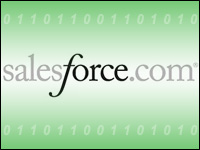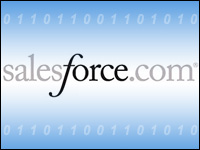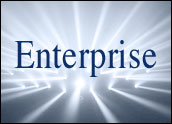
They say we have big brains because we have all needed to work better together over the past 150,000 years. The more people work together, the more tools they need to make collaboration a productive art, rather than a befuddled mess.
Rather than wait for human evolution to keep up the pace, Salesforce.com recently delivered its Chatter cloud-based collaboration service, based on social networking methods more common on Facebook or Twitter.
Directed first at enterprise help desk and customer service processes, Chatter has the strong potential to become a company-wide collaboration accelerant. And if that happens, more data and insights into what people do to solve problems can be identified, refined, repeated, automated and extended. The cloud model makes this easy to afford, to get to and to expand.
Data Freedom
Chatter, and its ilk quickly sprouting up elsewhere, can foster better, targeted and self-directing collaboration; can spur and capture the data about processes in progress; and can become a service feature within nearly any business application, process or ecosystem.
Email cannot do this. Instant messaging, no. Portals, not quite. Chatter shows that email’s role is overextended, counter-productive, and in need of a replacement.
But what caught me by surprise in watching Salesforce.com’s Chairman and CEO Marc Benioff introduce Chatter in San Jose, Calif., was not that consumer-focused social media motifs have a place in the productivity enterprise portfolio. What screams to me of “killer app” is that the data from social interaction are freer in the enterprise than they are on the open Web.
The data and analytics derived from Chatter are not defined by privacy boundaries or the attempt to define and maintain them. Any user company controls the data, and so the data is free to be cultivated, consumed, analyzed, reused, extended, captured, codified, integrated, innovated from.
The data from social media and network activities in the enterprise therefore is far more free and open to the enterprise needs than Facebook, Twitter, Yahoo or Google are free to use or share the data they have about what their (your) users do.
Virtual Scrum for the Rest of Us
Chatter helps to sort out what comes next when processes and people collide. Like with our communicative ancestors as they faced challenges in the dynamic wild, self-selecting groupings, pairings and open-ended dialogue about how to react to a situation can arise and amend via Chatter. This is a tool that entices and abets collaboration, rather than confines or stifles it. Too often machine-made silos confine today’s online interactions into point-to-point email threads that swiftly run aground.
The sweet spots to try out these cloud- and participant-accelerated cooperative scrums are help desk, service desk and IT. But it can and will go much further. Already more than 6,000 of Salesforce.com’s customers have adopted the new social collaboration application, out of 77,300 potential customers for the San Francisco-based SaaS business applications and services development platform provider.
HP has seen the powerful confluence of IT functions and social networking tools and UIs, as evidenced by its limited-beta 48Upper SaaS collaboration tool. I received a demo of 48Upper last week, and all the things that make Chatter powerful work there as well. I hope HP targets 48Upper beyond the IT department. [Disclosure: HP is a sponsor of BriefingsDirect podcasts.]
For while such uses as in software development and IT support are a no-brainers for Chatter and 48Upper, as they align well with agile and scrum methods, this is but the beginning. In a fast-paced business world, these app dev principles now have huge relevancy across many more business functions and processes. And Chatter can be the catalyst for doing so. It fits in well with Japanese kaizen and Deming-derived thinking too.
What’s more, Metcalfe’s Law has a supporting role, in that the more people that use Chatter, the more valuable it is; and there’s a qualitative branch to the support — the better the dialogue and sharing, the higher quality the thinking in the Chatter ongoing scrum, the more everyone benefits. This is the 100,000-year-old self-reinforcing frontal lobes cognition that makes us our human best … together.


















































What better audience is there to take a wonderful idea (SaaS + Collaboration + Mobile); effectively executed for businesses, non profits and individuals than those who have grown up using these tools? STUDENTS!
http://crmfyi.com/2010/05/17/the-higher-ed-cloud-studentforce-chatter-brilliant/